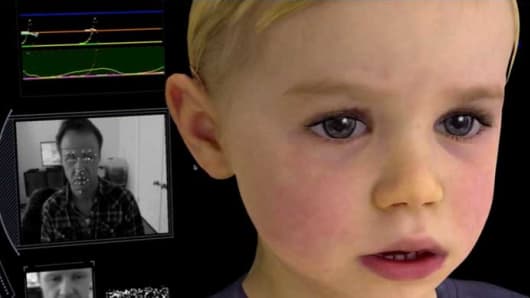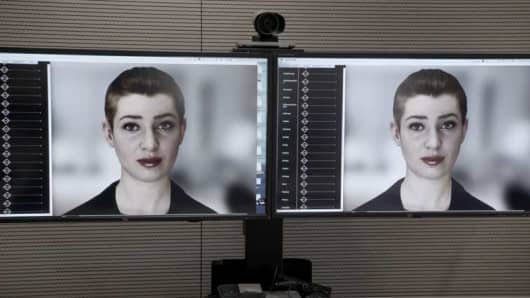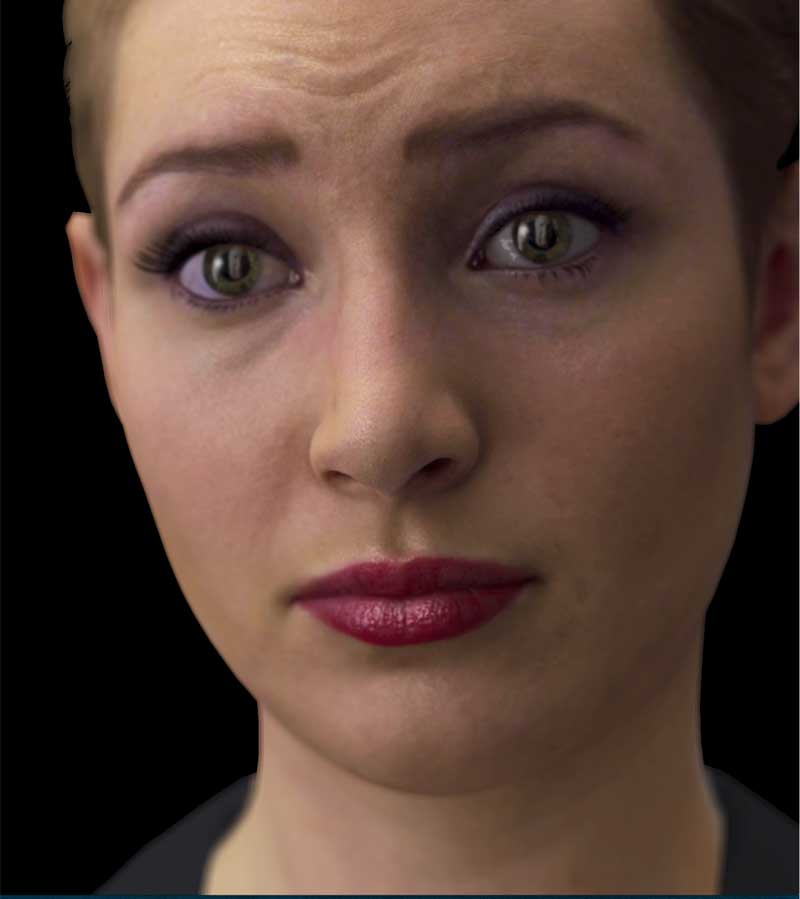- Mark Sagar invented a virtual nervous system that powers autonomous animated avatars.
- He is best known for developing Baby X, a virtual infant that learns through experience.
- Sagar says people will learn how to work cooperatively with AI powered robots.
In ten years artificially intelligent robots will be living and working with us, according to Dr. Mark Sagar, CEO of Soul Machines, an Auckland, New Zealand-based company that develops intelligent, emotionally responsive avatars.
Sagar, an AI engineer, is the inventor of a virtual nervous system that powers autonomous animated avatars like Baby X — a virtual infant that learns through experience and can “feel” emotions.
“We are creating realistic adult avatars serving as virtual assistants. You can use them to plug into existing systems like IBM Watson or Cortana — putting a face on a chatbot,” said Sagar.
Within a decade humans will be interacting with lifelike emotionally-responsive AI robots, very similar to the premise of the the HBO hit series Westworld, said Sagar.
But before that scenario becomes a reality robotics will have to catch up to AI technology. “Robotics technology is not really at the level of control that’s required,” he said.
The biological models Sagar has developed are building blocks for experimentation. “We have been working on the deepest aspect of the technology — biologically-inspired cognitive architectures. Simplified models of the brain,” he said. At the core of the technology, are virtual neurotransmitters that can simulate human hormones like dopamine, serotonin and oxytocin.
With computer graphics, Sagar says he can easily develop virtual humans that can simulate natural movements like a smirk or blinking of the eyes, which is not as easy to replicate with robots. “Robotics materials will have to get to the point where we can start creating realistic simulations. The cost of doing that is really high,” said Sagar. “Creating a robotic owl for example would take half a year or something. The economics are quite different from computer graphics,” said Sagar.
In about five years, Sagar says the system he has created could be used to power virtual reality games. “We want to create VR experiences where users can freely move through a world and the characters start to have a life of their own,” he said. “Once you put your AR or VR glasses on, you will have this alternate populated world of fantastic things that people haven’t even imagined yet,” said Sagar. Soul Machines is currently building the next version of Baby X.
The company recently introduced Nadia, a virtual assistant that helps people navigate information as part of the National Disability Insurance Scheme in Australia. (Nadia’s voice is that of actress Cate Blanchett.) “By adding voice you’re able to increase the dimensions of communication,” he said. The NDIS developed Nadia to help provide support for its disabled participants. “The Australian government is taking away the boring, painful things like repeated questions, a computer can do that and then the humans can respond to the more complex or more important questions. Freeing them up from mundane tasks,” said Sagar.
His goal is to shift the way humans communicate and interact with machines. “We are creating an interactive loop between the user and the computer. A real-time feedback loop in face-to-face interactions. If [the avatar] isn’t understanding, it can express that,” he said.
Nadia, like Baby X, can see through a computer’s camera and hear through its speakers. “Because it can see, you can show it things, which starts mixing the real world and the virtual world,” he said. Nadia’s ability to express emotions and read the expressions of others is an essential part of the user experience, according to Sagar. “We create intelligent and emotionally aware interactions between people and machines,” he said.
Sagar and his team are looking at other possible applications of the technology including medical education, psychological research and children’s characters that can be used for edutainment. “It could become a platform for which [animation studios] could build all types of different characters,” said Sagar. “It can also be [used] to create characters for medical simulation or training,” he said.
There is already a shift in the way humans interact with machines, he said.
“We’ll see increasing use of [AI] in lots of types of jobs to enhance people’s abilities,” he said. And if we want to know what the future relationship between humans and machines will look like, he says, look no further than our own daily interactions with other humans for clues.
“Humans cooperating together is basically what has created all technology and art and all kinds of things,” said Sagar. “When we start adding on to that the creative possibilities of machines, it radically expands,” he said.




